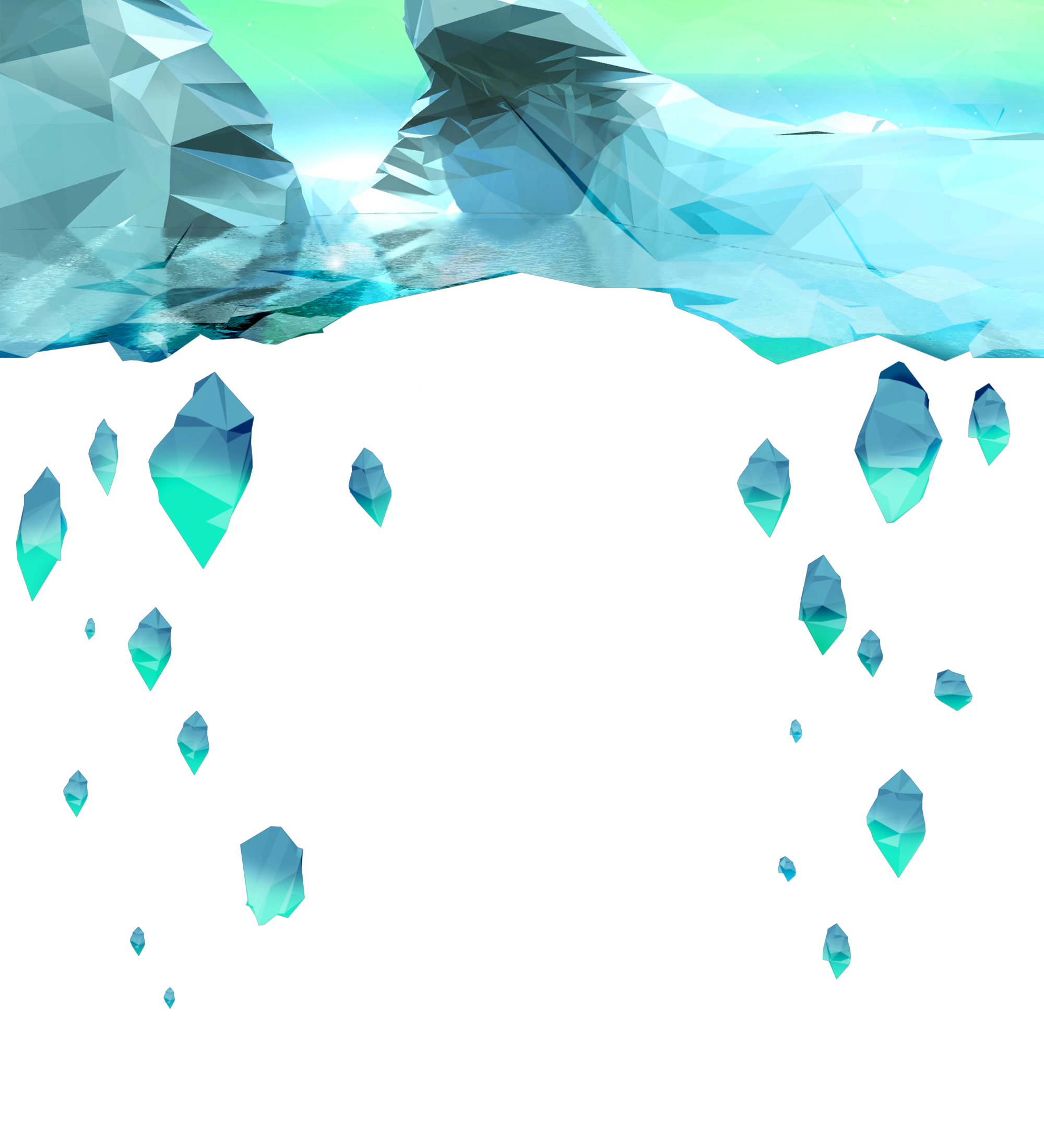A Virtual Reality Experience as a Polar Bear
About Echo
Brief
Echo is a virtual reality (VR) experience art installation group project created for our immersive environment class at Simon Fraser University (SFU). We wanted to tackle a real-world problem, rather than just to use VR for “wow” factors. To apply this moral we had an easy and hard mode for the game, where we will discreetly load whichever level of difficulty based on how the participant arrived into SFU. If they chose a eco-friendly alternative such as taking transit, they will have an easier level, whereas the opposite will load the harder version.
Concept
Echo displaces you from your sea to the arctic, where you assume the body of a polar bear, whose bear cubs were separated from you due to global warming. We wanted to use VR as a way to convey an emotional experience to help reinforce the idea of global warming in which the decisions we make and the outcomes it produces on defenseless animals in the north.
Challenge
The biggest challenge for this course is its premises. The course itself was an “intersession course”, which means a whole semester (approximately 14 weeks) is condensed to only half a semester (9 weeks). Time constraint is a major factor and the condensed and immense workload were the biggest obstacles for creating Echo. As well as, our team was one of the smallest groups in the class; we had a team of 3, while most teams were around 5 people.
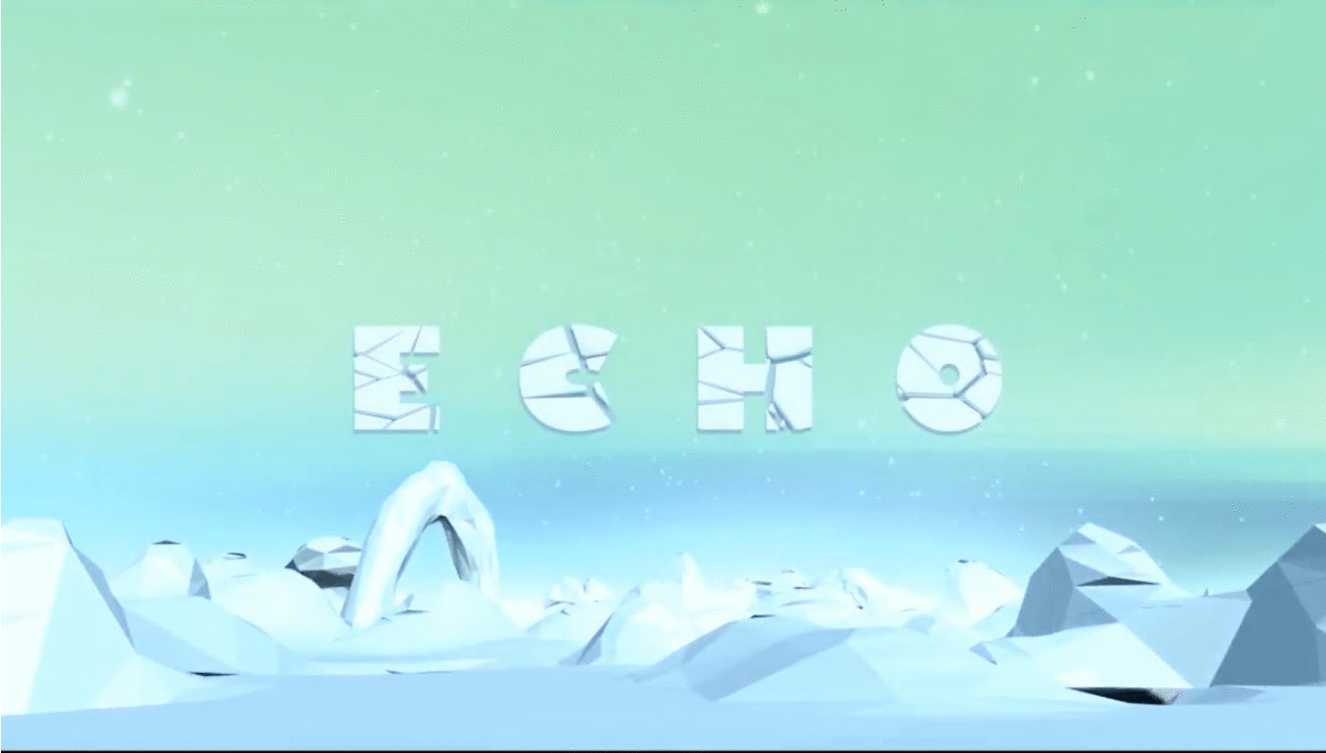
The content below is the process and my contribution to Echo. The final video is also shown after the process, but if you would like to watch the final video now, click here.
My Role
- Project Coordinator
- Lead Maya 3D Environmental Modelling
- Lead Maya 3D Character Modelling, Rigging and Animation
- Lead Unity Environment Ambiance Creator
Software Used
- Autodesk 2016 Maya
- Unity Game Engine
- Adobe Photoshop
- Oculus Rift TK1
Process
Project Topic Ideation
Before we came to the final idea above, we went through various iterations throughout the semester. Initially we wanted to combine an escape room idea, with a global issue like global warming. Another idea consisted of a multiplayer game, where one player’s decisions in a survey affects the virtual reality experience of the other player.
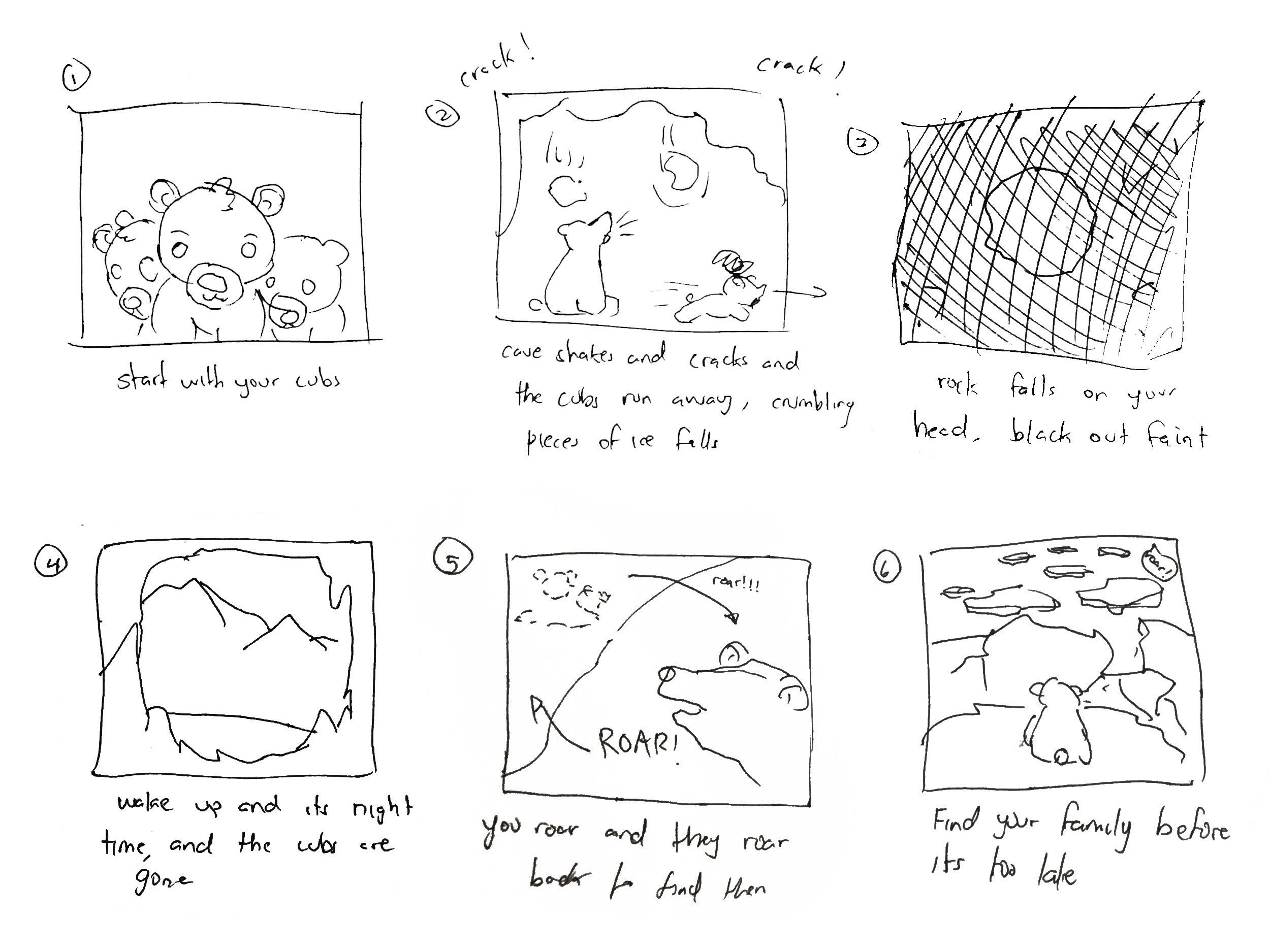
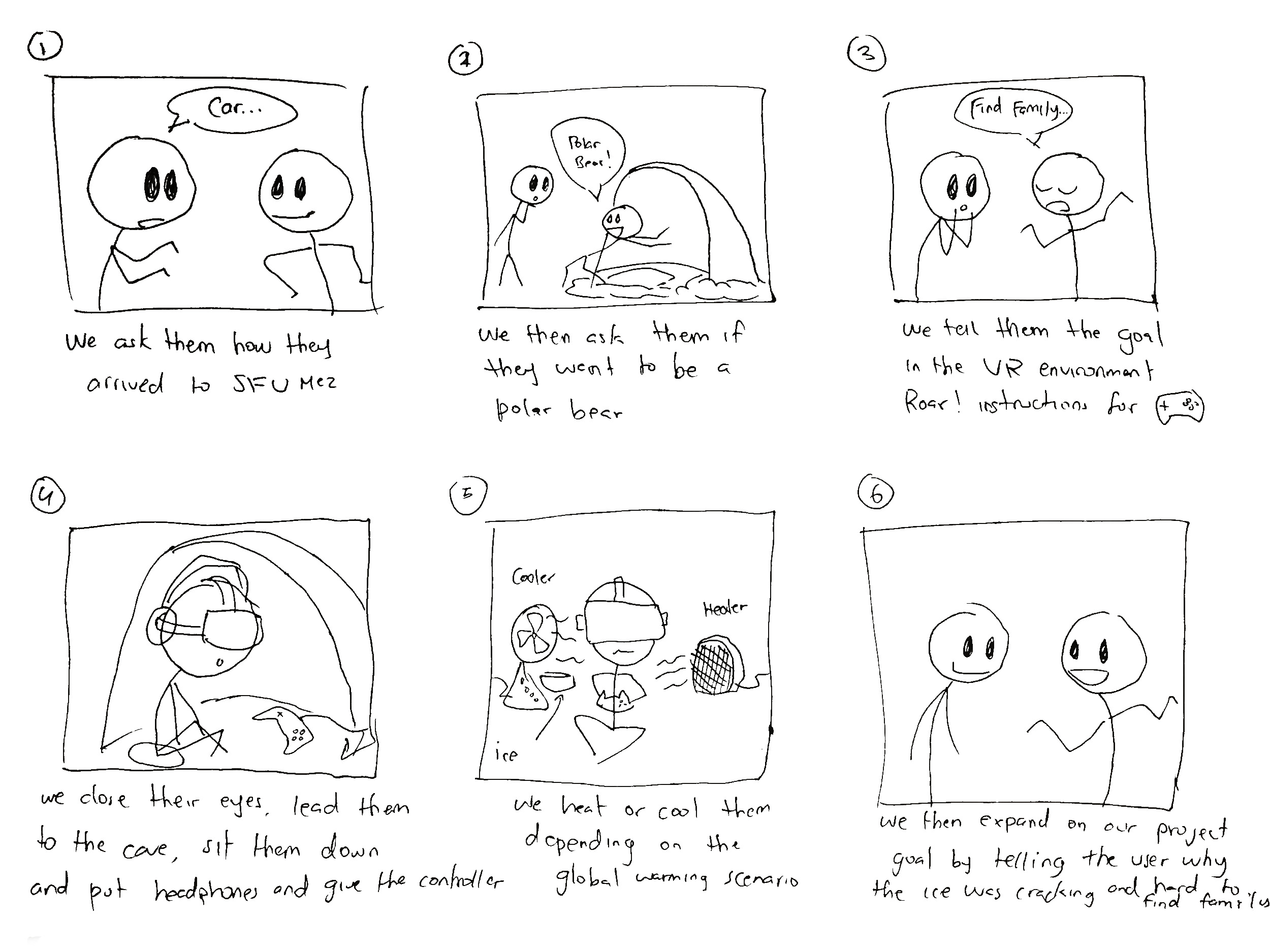
One of the major issues here was the inability to stick to one idea. Each iteration provided more labour for us, more workload, more complexity. We solved this issue by finding a “happy middle” while discusses with our mentors. In the end, we decided to use a short narrative with one player, where the user assumes the body of a parental polar bear, who lose their cub due to a recent earthquake caused by shifting and melting glaciers.
In terms of game mechanic, the user must roar so their lost cubs will roar back. The cub roar acts as an audio beacon and the user must use their hearing to guide their direction, while walking through the terrain and avoiding to fall into the toxic ocean. They must find their lost cub before the icebergs have separated too far and renders it impossible to find the cub.
Creating the Environment
There were several ways, I could have created the terrain. However, we decided to do a low-poly art-style to save time, while also creating a “child-like” appearance and ambiguity for a light-hearted feeling on the overall experience. We agreed that hyper-realism may be too gruesome.
Initially, I created some quick sketches of how the overall layout will look, and to clarify to my teammates how it would function.
The landmass was fairly straightforward to create because the arctic is barren with snow and ice. After creating the environment, I shifted them to a “low-poly” aesthetic and proceeded to separate them into chunks.
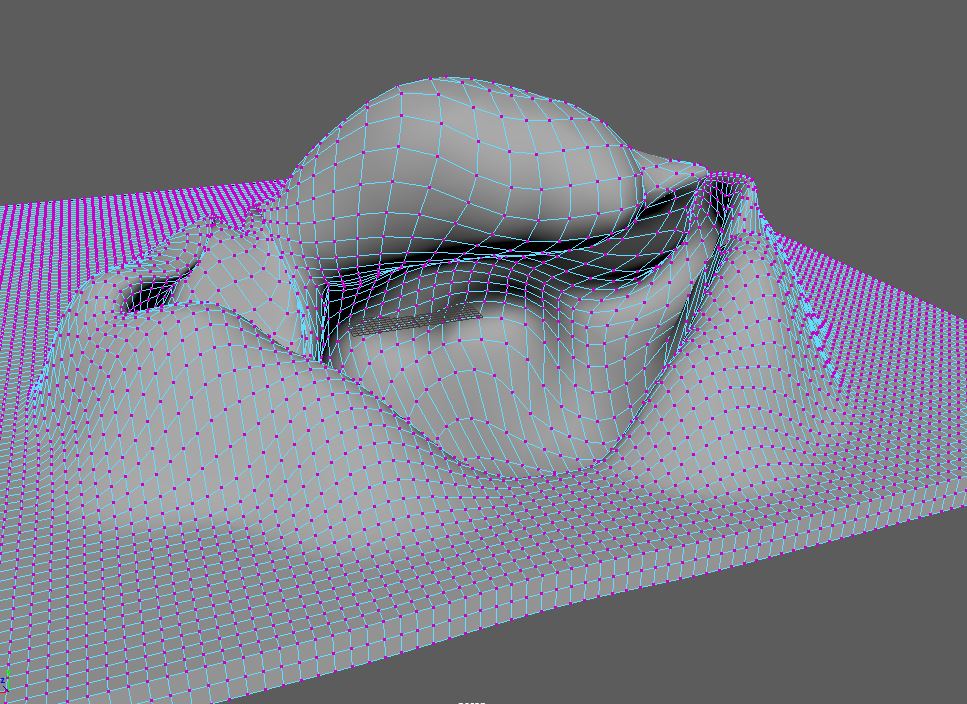
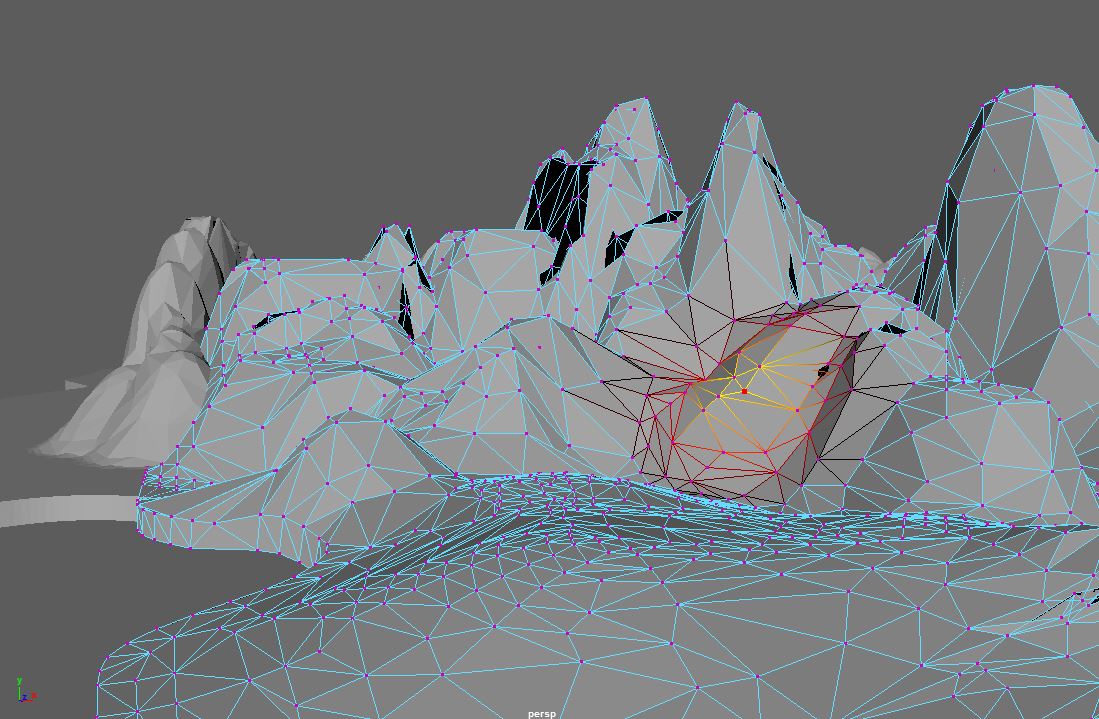
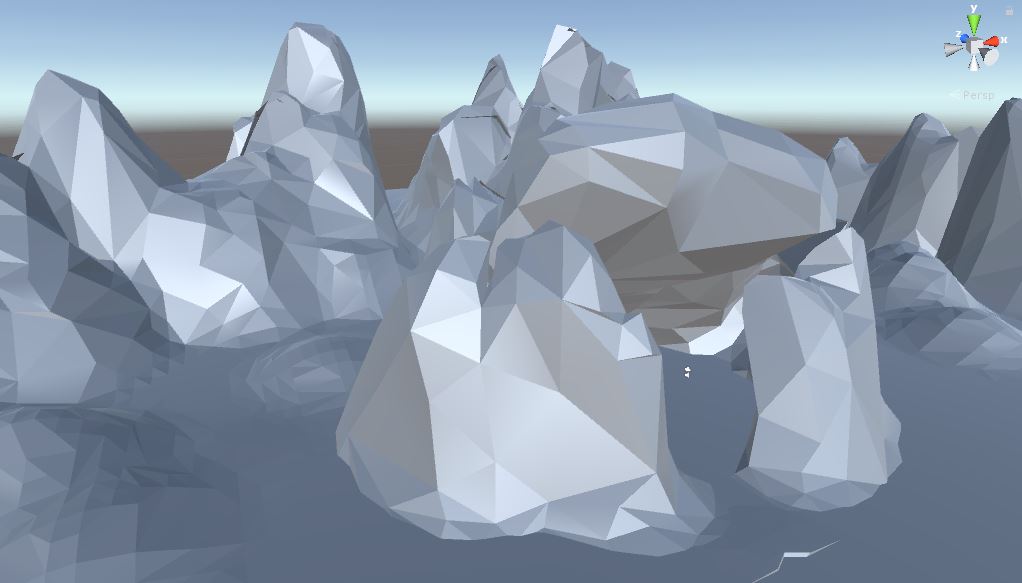
It was rather frustrating to work with Maya’s “shatter” effects because it tended to glitch and crash the program when the polygons are too detailed. However, I had to tolerate much of these bugs and repeatedly shatter the landmass, despite of the glitches.
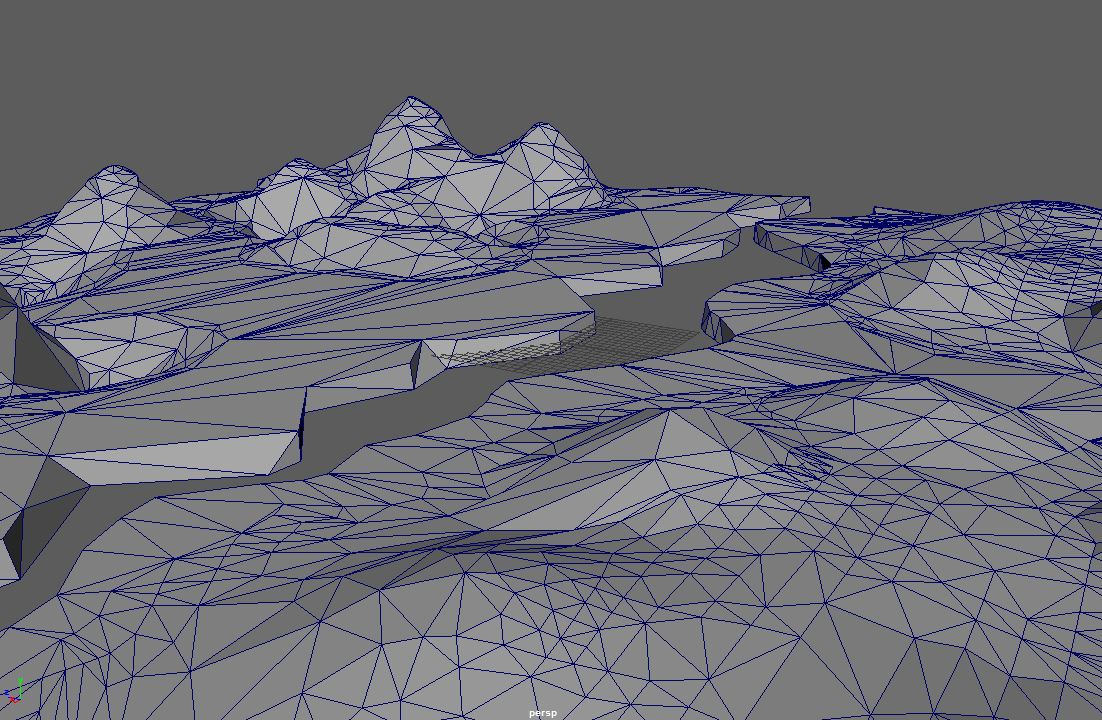
Creating the Polar Bear
Creating a character was fairly new to me. The polar bear model was one of the challenges I had to quickly learn, adapt and solve due to the time constraint. My first attempt of the polar bear for our draft was quite… strange. I tried to give them more of a humanoid persona by giving them the body of a human with a polar bear head, but it proved to be odd. However, this was not a waste of time, because it helped me remember old tools I forgot about in Maya because I have not modelled in quite some time.
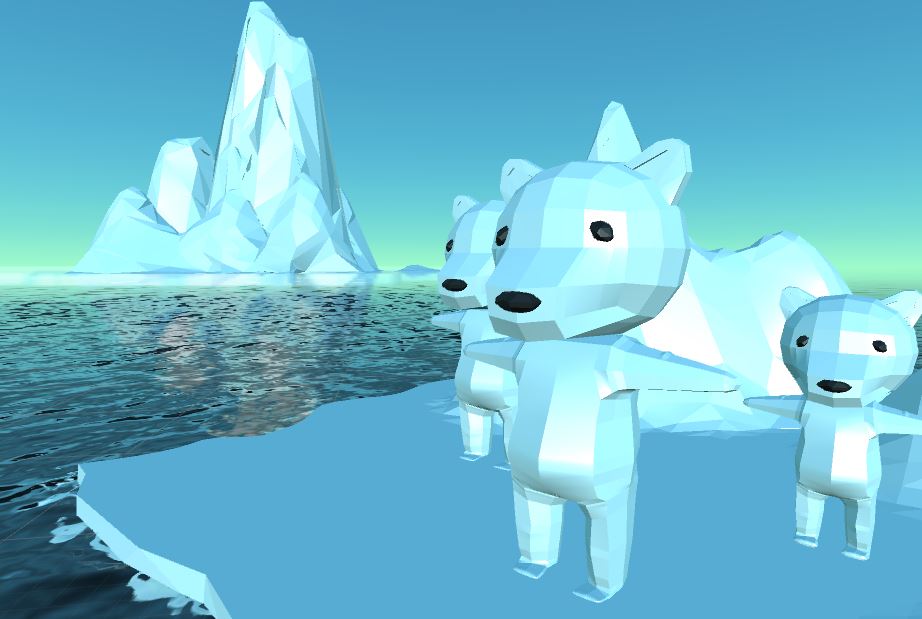
For my second attempt, much of my time creating the polar bear was playing around with Maya tools and using an image diagram of a side-view polar bear as a reference. I decided to use a reference to make a more convincing and realistic polar bear.
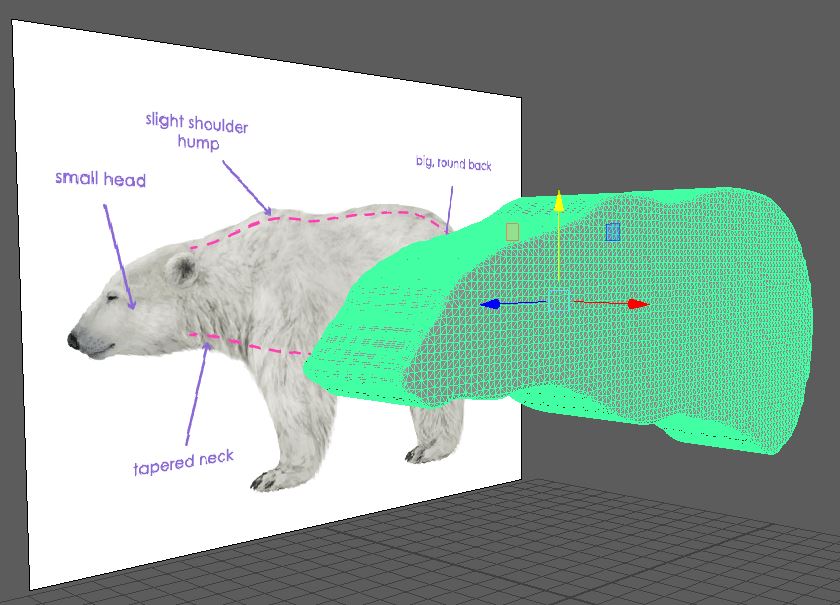
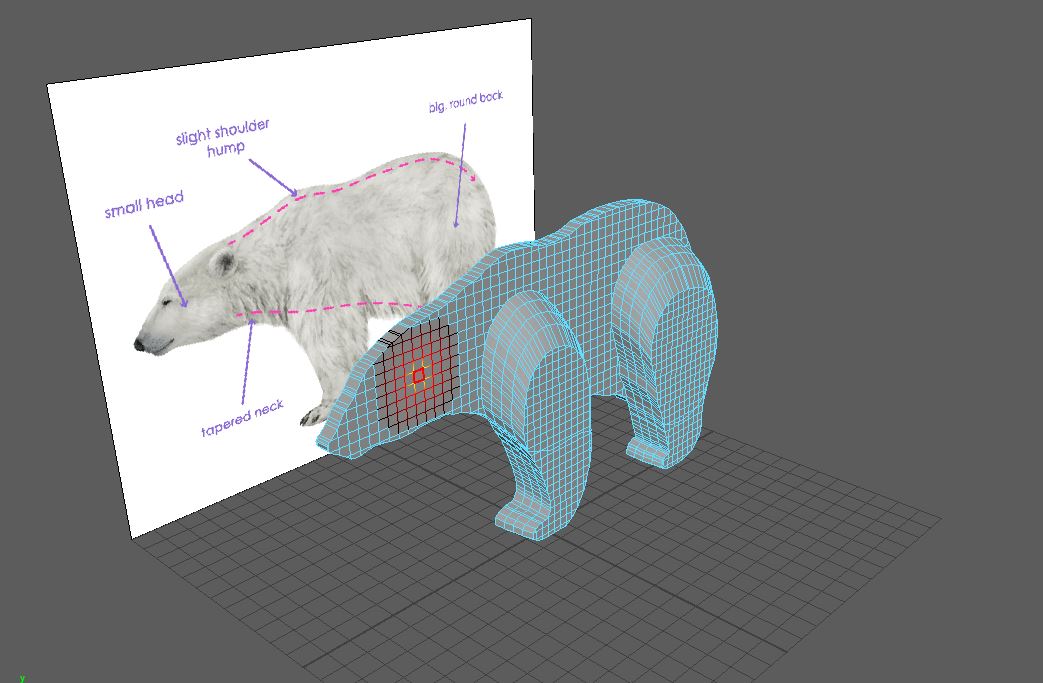
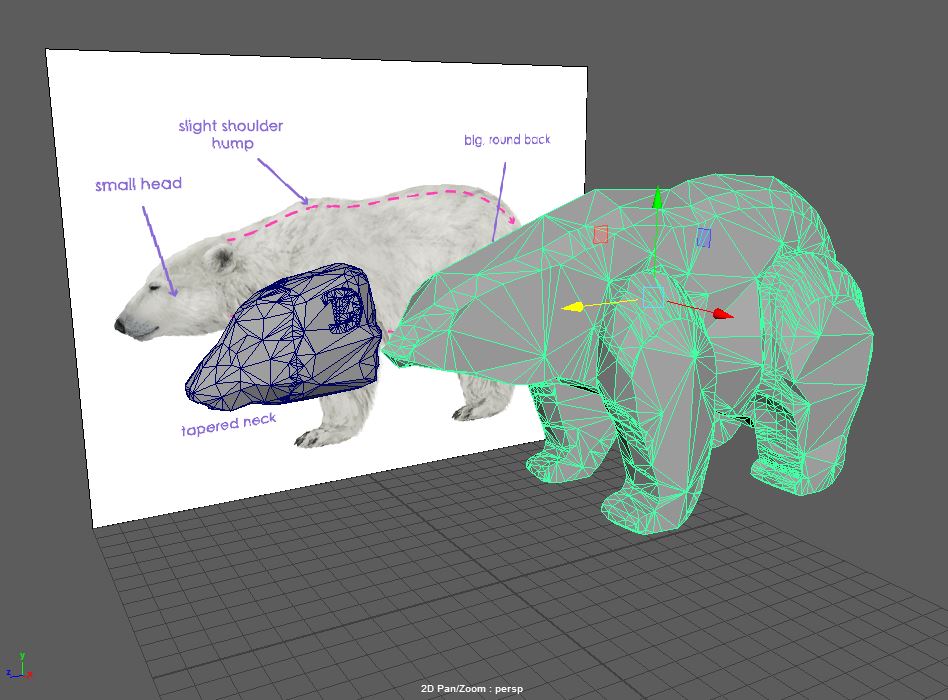
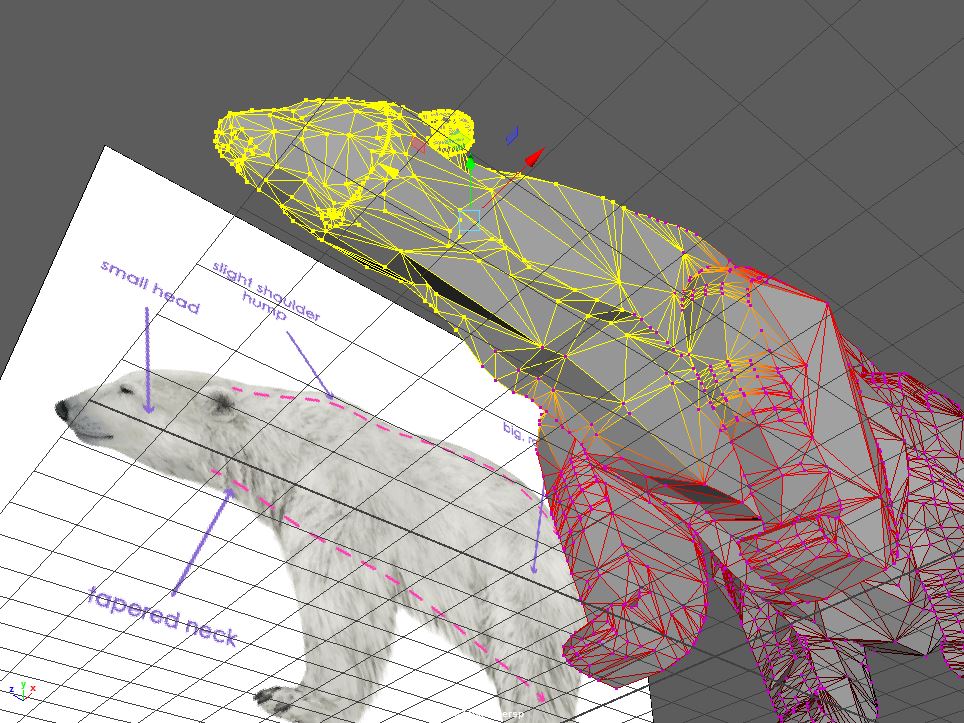
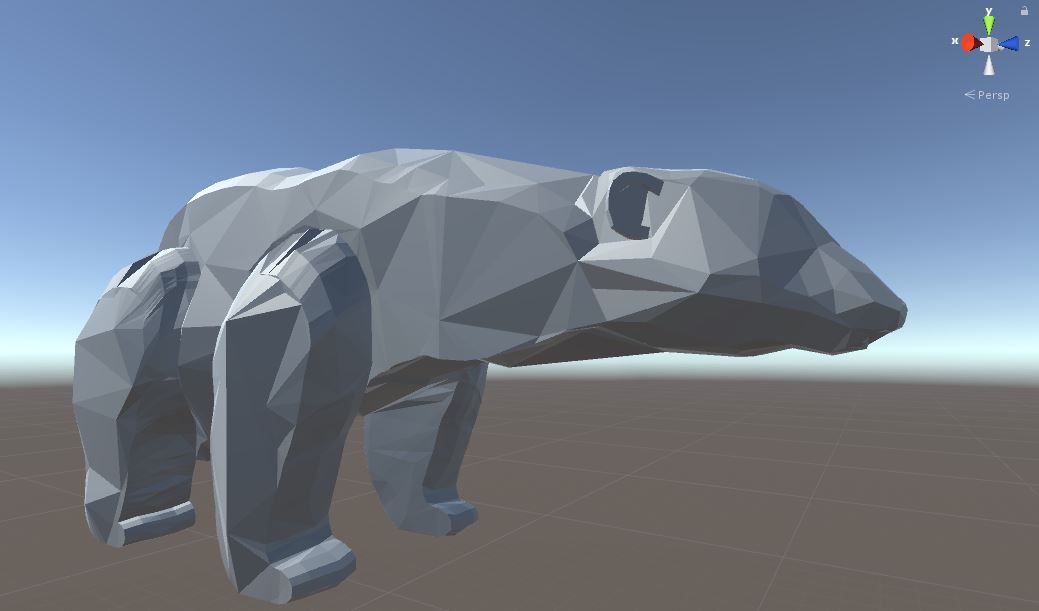
Another new problem in this portion of the project was rigging and animating. In my first project involving Maya, “Polygone”, I was hyper-focused on modelling and barely made progress in my rigging or animating skills. Therefore, I had to quickly learn how to rig and animate again from online tutorial videos and my colleague, Eva Li, who was also in the Polygone project. In Echo, my main contribution was modelling and animating the bears, however there was a bird component where Eva had to do the rigging and animation.
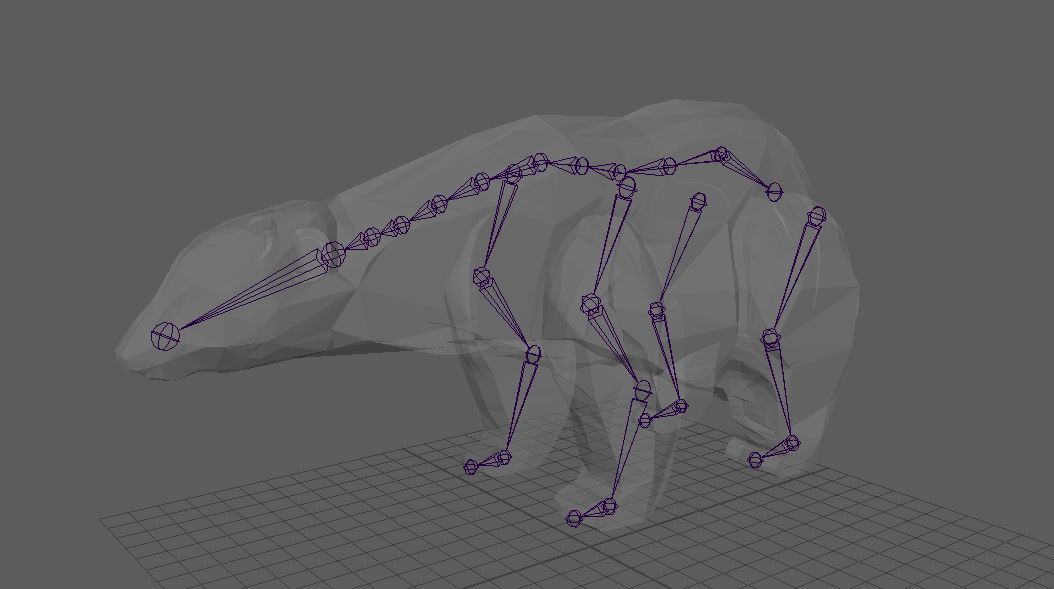
Putting It All Together
Echo's process was not linear, much of it was in a loop of: create the model, add them into Unity as assets, and then apply ambiance. Applying ambiance in this case means applying all the aesthetic of cold, northern, and arctic such as: the northern lights, sound, fog, light, snow, wind, water and gust. All of these ambience effect was added by me in Unity.
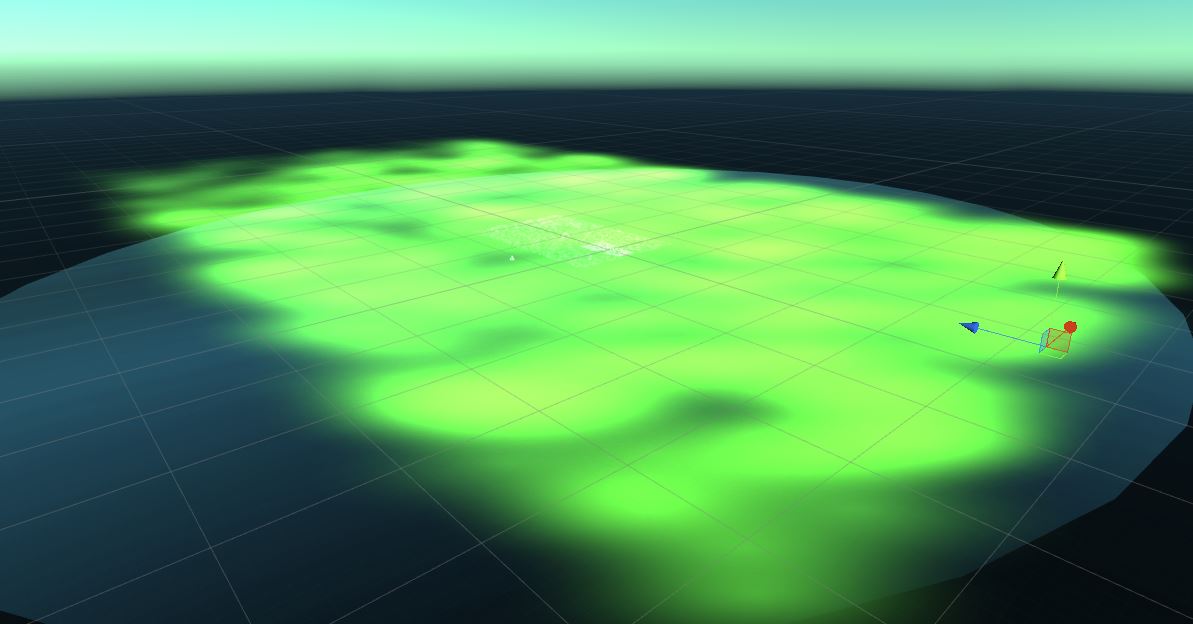
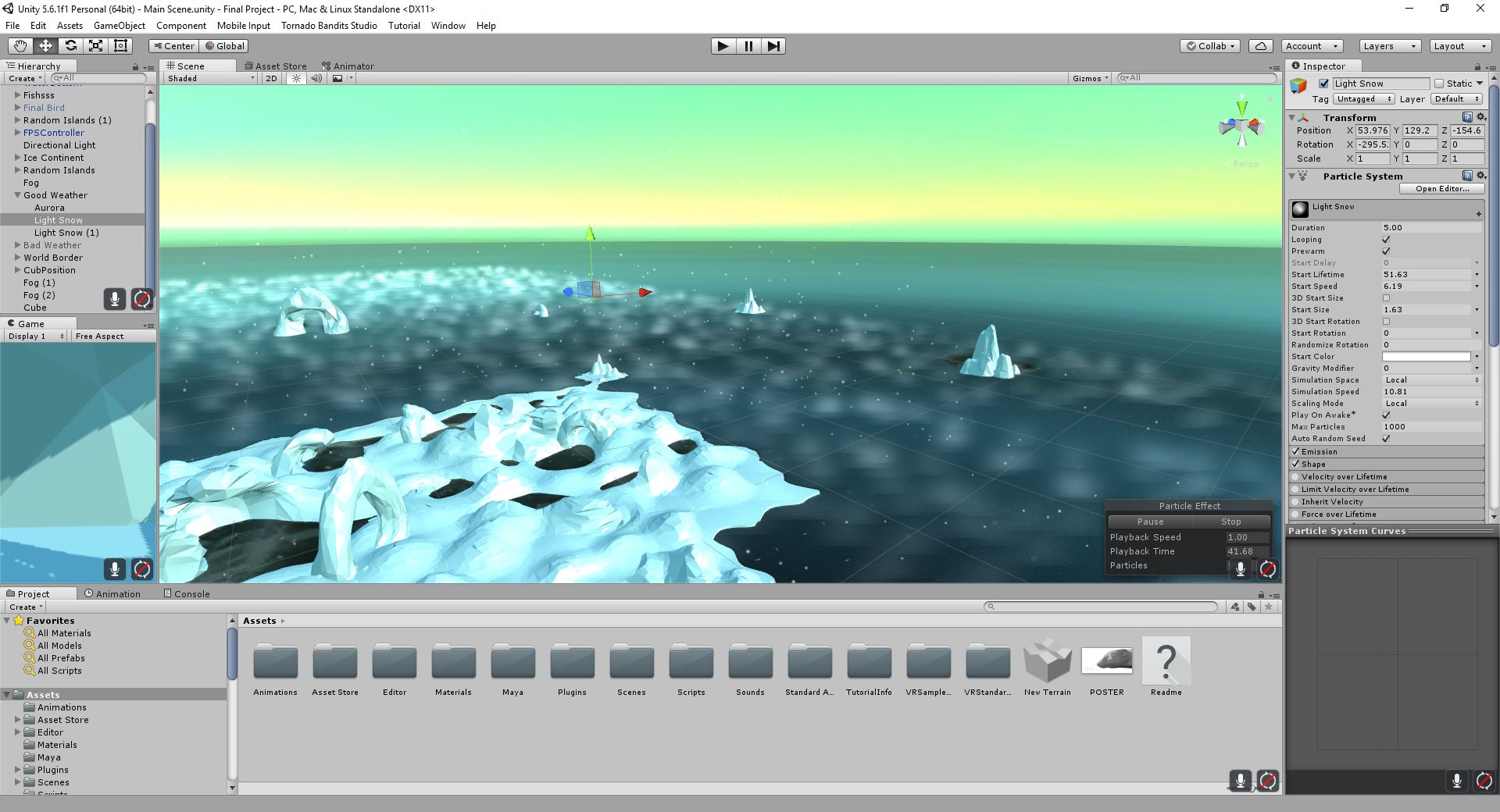
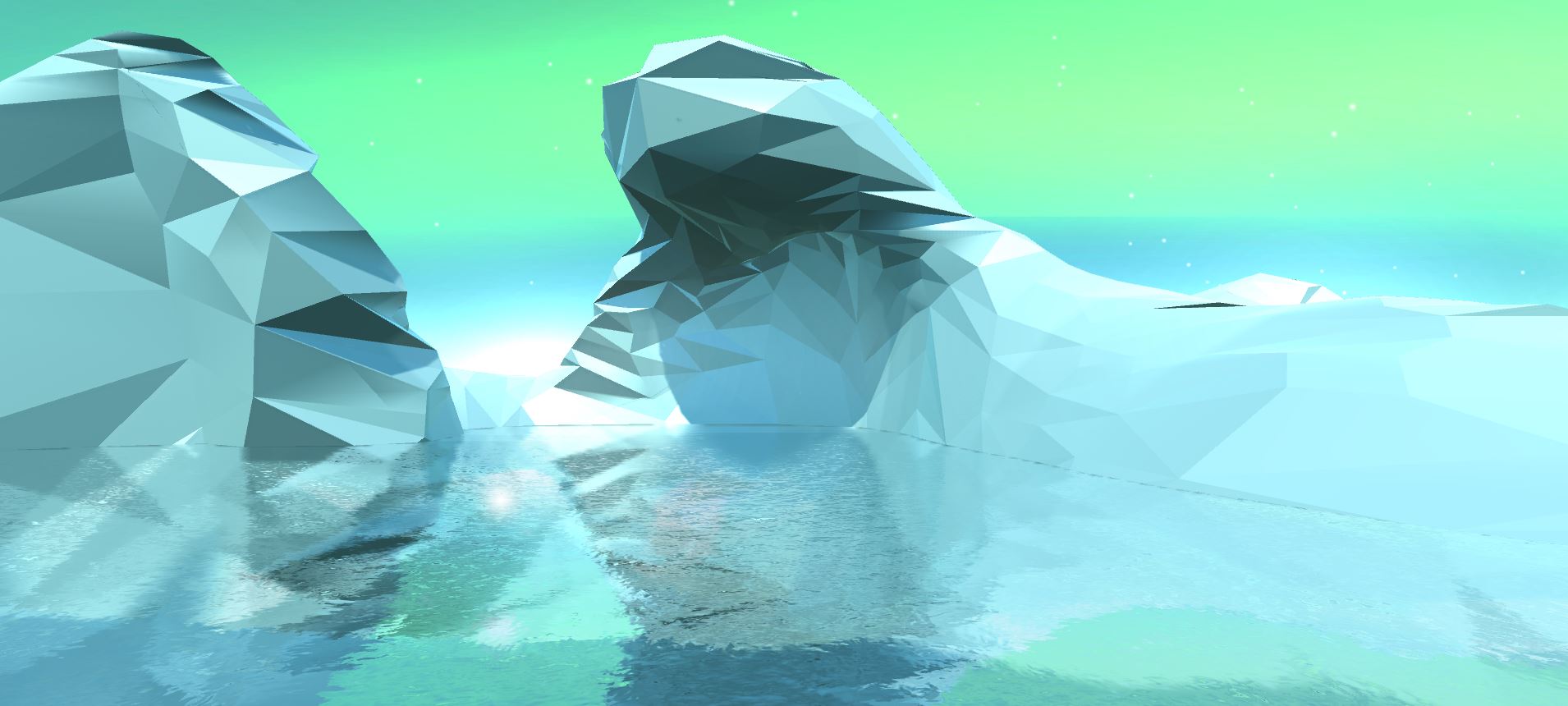
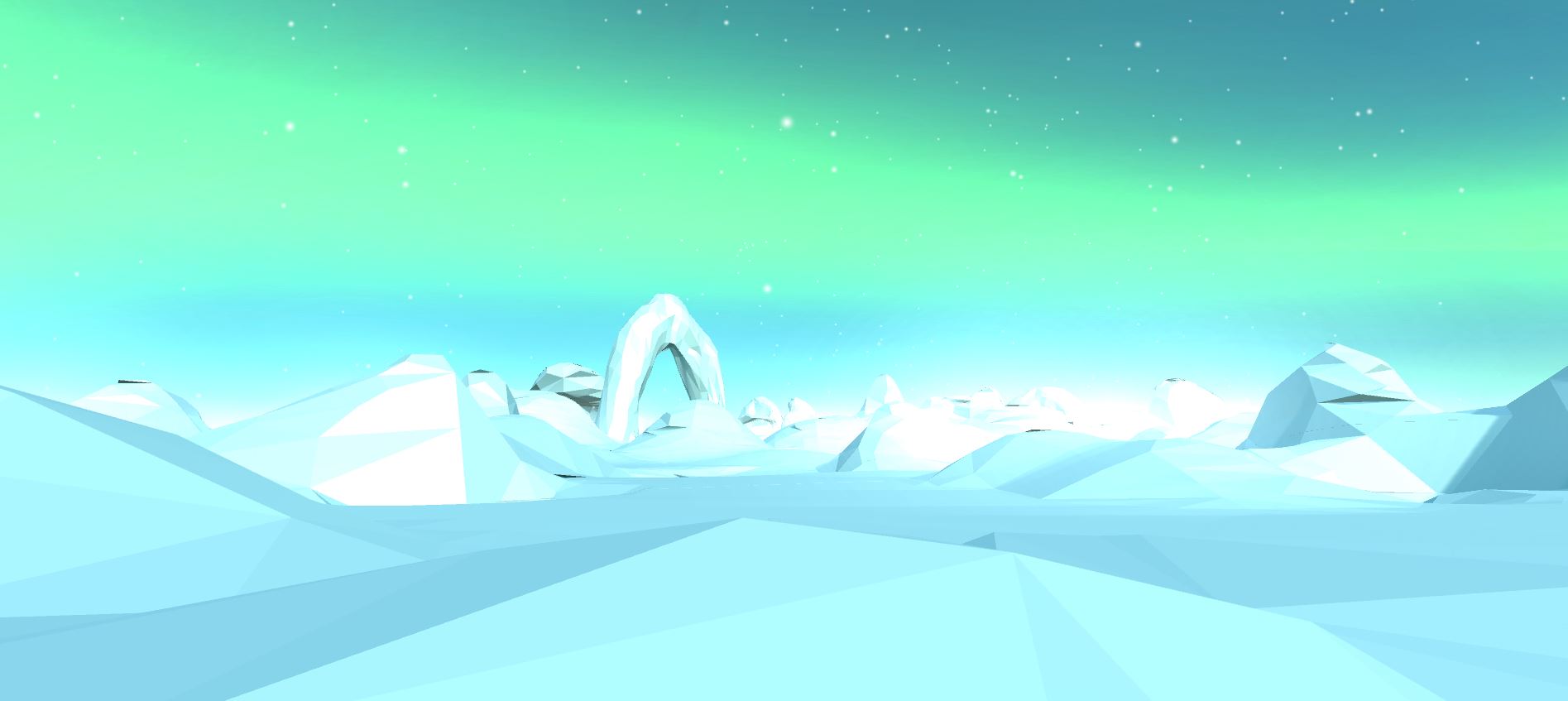
This is the final video accompanied with the Echo project
In terms of functionality and game mechanic, these were all applied by our programmer, Eva Li, whereas the sounds were tempered by Larry Tsai, my other group member. I had to direct Eva what to do, and which code to add to which model, while I also asked Larry to create/find ambient music and sound effects that enhances the “Arctic atmosphere” of Echo. Much of my inspiration is just from my ideal biases of the arctic, as well as inspirations from real sources, such as works by Al Gore.
Around this time, Eva was also hard at work on our physical installation. This installation will be the external immersive factor of Echo, which is creating a physical igloo at the SFU Mezzanine, that leads the user to further immersion, using the VR experience we created together.
As an added immersive factor, I had an idea of adding a fan which I brought from home. The fan was placed and started behind the player after they have put on the VR headset to mimic the cold wind blowing in the simulated arctic scenery.
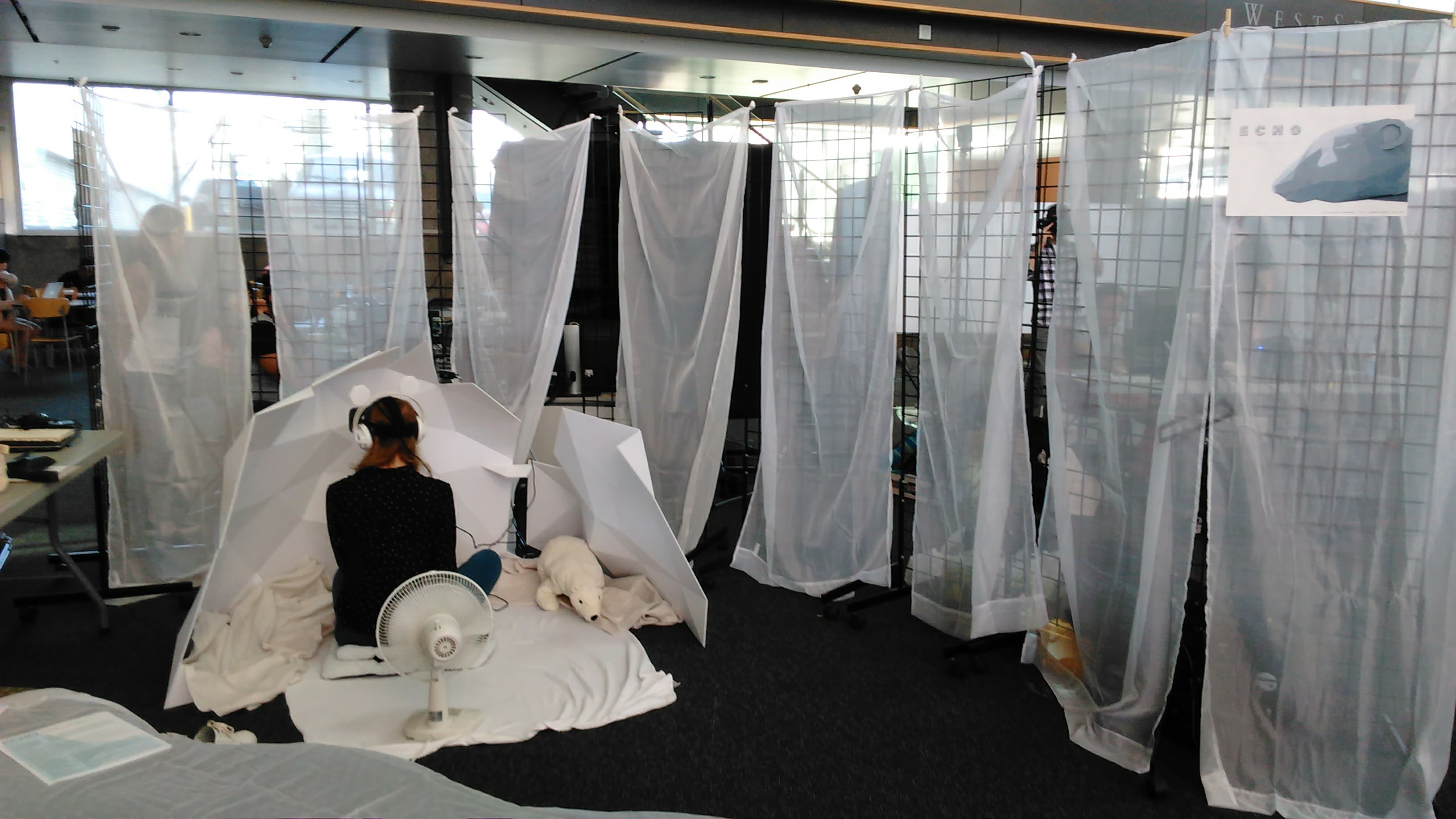
Final Remarks
Although there were some confusion in terms of the narrative flow, the participants had an enjoyable experience. Most of the participants understood the goal of Echo after we explained the purpose of the VR experience at the end of their playtime. They gave much postive feedback about the immersive factors of Echo such as the fan, the installation, and the virtual environment. Other participants felt the controls were somewhat unnatural and it caused nausea. This issue of unintuitive controls was a byproduct of limited time and limited resources. We have contemplated other means of moving through the environment such as the Wii Board or some kind of walking-in-place mechanism, which may be applicable in future endevours with the project. However, overall Echo was quite successful within the time frame and our mentors applauds the amount of work we accomplished in a short amount of time.
Echo was second major project that involved a heavy use of Maya for me. However, it was a learning experience because it changed my perspective from just creating models for animation purposes to immersive factors involving virtual reality! It was really fun being able to “be” in the place that I created in Maya and Unity! It was also a great challenge for me to finally move on from just modelling but to rigging and animating. Echo also forced me to combine 3D modelling in Maya with a game engine such as Unity, which can be an interesting duo for my future gaming projects with 3D assets.
